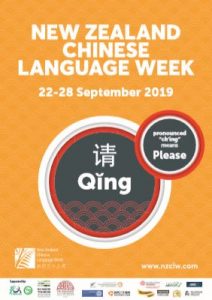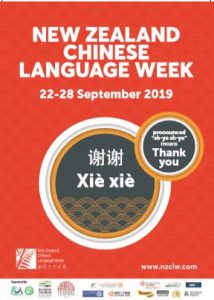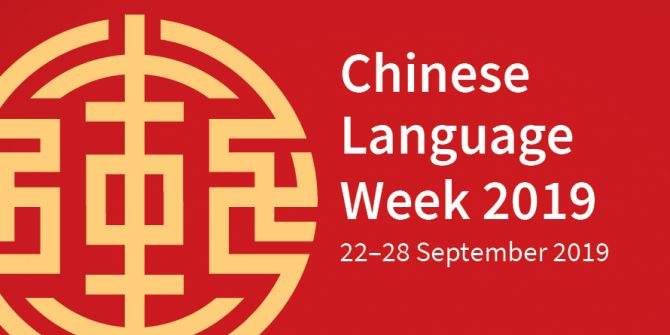Come and celebrate New Zealand Chinese Language Week with Christchurch City Libraries.
基督城市图书馆与您共庆新西兰中文周
New Zealand Chinese Language Week, opens a new window has been run annually since 2014. This year it falls from 22 to 28 September. During this week, people can have opportunities to participate in various events and activities nationwide to appreciate Chinese culture and learn some basic Chinese phrases like hello 你好Nǐ hǎo and thank you 谢谢xiè xiè.
Learn more about speaking Chinese
Christchurch City Libraries organises programmes and provides Chinese language resources for you to explore Chinese culture and language. If you would like to try spoken Chinese, you can attend Shirley Library's Chinese Taster Class from 10am to 11am on Saturday 28 September; and Linwood Library's learning Chinese phrases and numbers with bingo games at 3.30pm to 5.00 pm on Monday 23 September, Wednesday 25 September and Thursday 26 September.
View the full list of 2019 Chinese Language Week events and activities in libraries, opens a new window.




The pinyin system as an entrance
For Chinese language learners, it is not easy to gain speaking, listening, reading and writing skills as linguistic rules in Chinese may be very different from those in other languages. However, learning Chinese is still an achievable mission. It becomes easier if we can find a proper starting point. The pinyin system provides us with such a kind of starting point so that we can master the language quickly. Pinyin is the abbreviation of Hanyu Pinyin 汉语拼音 which is spoken by the Han people who are the majority of Chinese population. It is a romanisation system for Mandarin Chinese invented by Zhou, Youguang, opens a new window, a Chinese economist and linguist. It was officially introduced into the education system of Mainland China in the late 1950s.
As a spelling system of Chinese, pinyin is represented with alphabetical letters which have pronunciations differing from those in English. There are six vowel letters and twenty one consonant letters applied to the spelling system. They are:
- Vowel letters: a, opens a new window o, opens a new window e, opens a new window i, opens a new window u, opens a new window ü, opens a new window
- Consonant letters: b, opens a new window p, opens a new window m, opens a new window f, opens a new window d, opens a new window t, opens a new window n, opens a new window l, opens a new window g, opens a new window k, opens a new window h, opens a new window j, opens a new window q, opens a new window x, opens a new window z, opens a new window c, opens a new window s, opens a new window zh, opens a new window ch, opens a new window sh, opens a new window r, opens a new window
The sound of a Chinese character is made with a combination of consonant letters and vowel letters. the alphabetical letters of y and w are used at the beginning of a syllable to represent and be pronounced as i, opens a new window u, opens a new window
Another important rule of the pinyin system is intonation as Mandarin Chinese is a tonal language. The same syllable with different pitches on the main vowel letter can represent completely different Chinese characters and concepts. The four tones used in the pinyin system are as follows:
- The 1st tone sounds long with a high pitch. For example, the syllable of mā , opens a new windowrepresenting 妈 mother.
- The 2nd tone sounds long with a rising pitch. For example, the syllable of má, opens a new window representing 麻 flax.
- The 3rd tone sounds short with a low pitch. For example the syllable of mǎ, opens a new window representing 马 horse.
- The 4th tone sounds short with a falling pitch. For example, the syllable of mà, opens a new window representing 骂 blame.
The intonation of spoken Chinese can be the most tricky part for Chinese language beginners, but it also adds some fun to the learning process. Moreover, English-speaking people may have a feeling of familiarity with the romanised pinyin system as it uses the same set of alphabetical letters. The mastery of pinyin rules can help Chinese language learners further progress in speaking, listening, reading and writing Chinese characters and phrases within a relatively short period. The prevalence of computers in our lives means that we can type Chinese characters with pinyin input methods even if we may not exactly know how to write them by hand.




Add a comment to: Speaking Chinese with the aid of pinyin in New Zealand Chinese Language Week